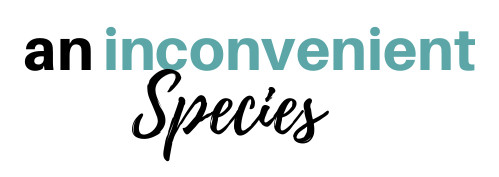For millennia, people lived relatively short lives in small groups, learned from quick feedback (put your hand in the fire: it gets burned) and had little impact on their wider surroundings.
Raworth, Kate. Doughnut Economics (p. 112). Random House. Kindle Edition.
Hence our brains evolved to cope with the near, the short term and the responsive, while expecting incremental, linear change.
Putting our own needs for comfort, prestige and connection ahead of social and ecosystem well-being isn't something unique to Industrial Era humanity. We've probably been doing it since we moved into cities and away from the evidence of our impact.
Pliny the Elder was complaining about destruction in the 1st century AD - a time when Romans pillaged shellfish beds to dye their clothes and "barbarian" communities to provide the slaves to build their cities.
If it's important, embed it
When city buildings decided to get serious about water and energy conservation, they embedded in their buildings. They installed automatic doors and created airlocks. To conserve energy and water, they built in automated lighting and taps - controlled by sensors.
Long term sustainability isn't primarily going to be delivered by regulation and consumer frugality! (That will help - but the endgame is an intentional economy designed to regenerate ecosystems and communities - not "willpower".)
It's going to be delivered by regenerative design and systems upgrades. It's going to be delivered by Cradle to Cradle Product Innovation and Circular Economy supply chains and Doughnut Economics.
It's going to be delivered by biomimetic production techniques where renewable products are made at room temperature using renewable materials and renewable energy.
It's going to be delivered by a regenerative economy that operates WITHIN its planetary boundaries.

Sustainability is an engineering opportunity, not a consumption problem
"Engineers can't NOT solve problems - it's in our nature"
Kathleen Davies, Ekkremon.com.au
The world's best and brightest innovators, biologists, engineers, architects, yachters and chemists have been busy for decades on smarter, cleaner, safer systems.
Radical industrialists have been turning their concepts into proven, profitable products and (increasingly) services.
Real sustainability will be the result of systems that are more than "sustainable" - systems that are actively regenerative.
We know how to do it today - and the world's innovative businesses are working on it.
Where to look for solutions?
The Natural Step first defined an industrial system that would respect the ecosystems. In a sustainable society, nature is NOT subject to:
- concentrations of substances from the earth’s crust (such as fossil CO2, heavy metals and minerals)
- concentrations of substances produced by society (such as antibiotics and endocrine disruptors)
- degradation by physical means (such as deforestation and draining of groundwater tables)
- and in that society there are no structural obstacles to people’s health, influence, competence, impartiality and meaning.
Source: The Natural Step Approach
Principles for products, services and businesses that regenerate by design were further described in Natural Capitalism in 1999:
- Radical resource productivity (Translation: use 10 times less, at least)
- Biomimicry (Translation: Nature is smart, let’s copy it)
- Service and flow economy (Translation: Sell the ends, not the means)
- Invest in natural capital (Translation: Treat the environment as a source of wealth).
Source: Have you always mean to read Natural Capitalism?
Doughnut Economics integrates economics, design and systems, using 7 strategies:
- Change the goal - from GDP growth the finding the sweet spot.
- Seeing the big picture - business within communities and ecosystems.
- Nurture human nature - social adaptive humans, not rational economic units.
- Get savvy with systems - understand and leverage dynamic complexity.
- Design to distribute - distribute well-being by design in a generous economy.
- Create to regenerate - design systems that regenerate rather than endlessly grow.
- Be agnostic about growth - break the addiction to "yes" or "no".
Source: Doughnut Economics
